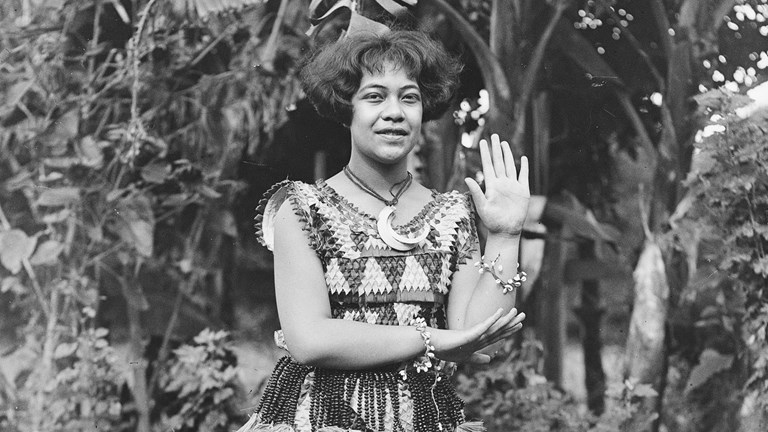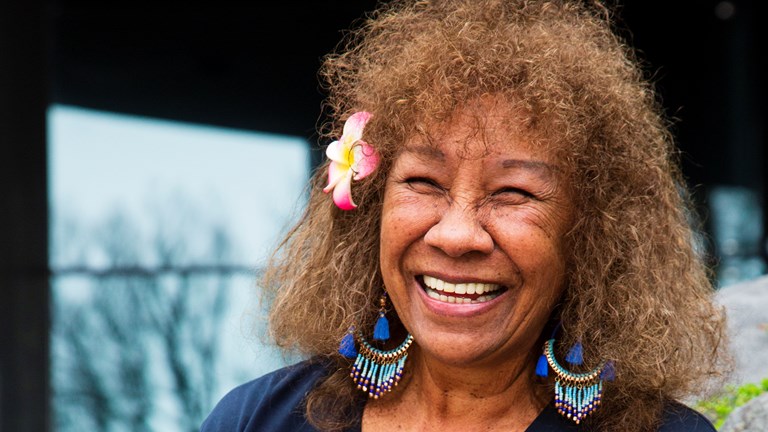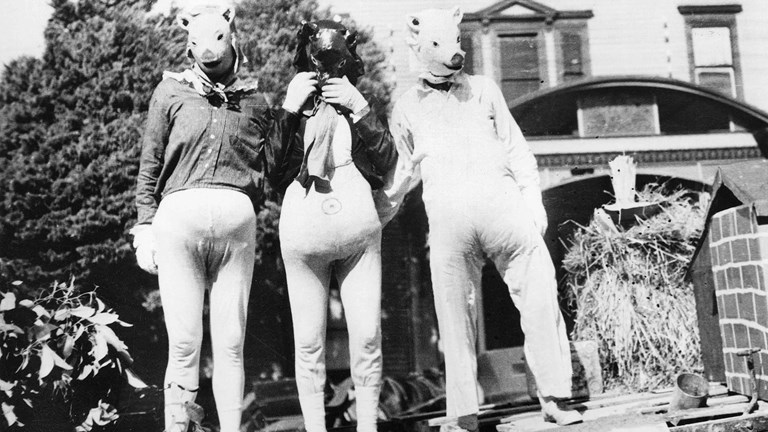Unboxing the museum: Mirka Mora Collection
Mirka Mora was all about being herself, her fashion style, her artistic practice, her friendships and creative circles, and her food culture.
She was a non-conformist, a free spirit, and always true to her very unique, creative identity. The very act of migrating with her husband Georges was an act of self-preservation and re-invention. And by being herself, she helped to transform Melbourne into a cosmopolitan city.
The museum was fortunate enough to acquire objects from Mirka’s former Richmond studio that reveal her journey of personal discovery – from post-World War II migrant to one of Melbourne’s most beloved cultural figures.
In this Unboxing video Dr Moya Mcfadzean unveils a range of Museums Victoria collection objects including clothing, painting tools and equipment, sewing and embroidery material and equipment, an unfinished artwork, miniature dolls, toys and furniture.
Transcript
Hello, my name is Moya McFadzean. And I'm the Senior Curator of Migration and Cultural Diversity at Museums Victoria. Today, I'm in one of the wonderful conservation labs in one of the museum's collection stores. And it's here that a lot of the work happens to treat and preserve our vast and amazing collections at the museum. And I'm delighted to share with you today some wonderful, precious objects that the museum was fortunate enough to acquire. And they all relate to the life of the wonderful Melbourne icon Mirka Mora.
All of these items explore different parts of the multiple identities of Mirka Mora- Mirka as an artist, as a painter, as a bohemian, as an aesthete, as a migrant. Mirka was a complex soul. She was born in Paris in 1928 to Lithuanian and Romanian parents. She and her family survived the horrors of the Holocaust in quite miraculous circumstances.
And in 1947, she married the love of her life. Georges Mora. And they migrated to Melbourne on the 4th of June, 1951. Melbourne, at that time, would have been a bit of a shock for Mirka and Georges. It was a long way from the cosmopolitan city that we know today. And Mirka and Georges were really fundamental in helping to transform Melbourne into a vibrant, multicultural, artistic, energetic city.
Mirka's studio was crammed to the brim with an array of incredible objects, all of which played a role in her artistic and creative life. I'd first like to focus on these lovely paint boxes. These are just a number that we acquired for the collection. And Mirka would refer to these little paint boxes as true friends. So they were portable. And so she was able to take her artistic practice wherever she went. We can see that they're quite heavily used. There's different colours, different paints, and different paint brushes. In this one just here, we can see a little postcard that we discovered, which is a postcard of Notre Dame in Paris. So it really is an object that connects Mirka to where she came from, her beloved Paris, her beloved France.
This group of material here explores Mirka as a textile artist. And in fact, Mirka was a really important exponent of this form of artistic practice. She loved collecting sewing boxes. And the museum acquired a number of her sewing boxes. Much to our delight, when we opened one of the sewing boxes, we discovered this unfinished artwork. It shows us the process of how Mirka created her artwork, from the pencil drawing through to the stitching to incorporate different fabrics and textures into her work. We can see here her very famous winged figures, which appear in so many of Mirka's various artworks. It's as though she just walked away and left it for a moment. The needles are still tucked into the corner of the fabric there.
Over here, we have some lovely examples of the sort of items that Mirka used to surround herself with to create the miniature worlds that she used to inspire her creative practice. We've got some miniature furniture. This one's a particular favourite. It's covered in spatters of paint, which reflect the chaos of the studio that Mirka lived in. There's some little prams, dolls, some little toy animals, which all speak to Mirka's inner child. They're also quite poignant because Mirka felt that she really lost her childhood in the war and the Holocaust.
So it was important to her to always be going back to her inner child. For Mirka, creativity was a performative practice. So she would play with these items. She would move them around and create stories out of them. And then, that process would inspire her work.To the front here, we've got a string of labels made by Mirka. Many people don't know that, when Mirka first came to Melbourne, she was a self-taught dressmaker.
So she was making bespoke gowns and accessories, often from clients being sent to her from Georges, the well-known department store on Collins Street in Melbourne. Mirka's family recall that, in the early days when she and Georges didn't have a lot of money, but Mirka still liked to have her distinctive style. So she would try to glamorise some of her more simple garments with costume jewellery, such as this one, just to give it a bit of bling and individuality.
Then, we have these lovely belly boots. These are very indicative of Mirka's later style-- comfortable, practical. And behind me, we have some garments. We have this lovely velvet capelet made by Georges in Melbourne. Mirka loved vintage clothing. So again, that added to her very eclectic style. So she would have worn this Edwardian-style piece with a lot of pleasure.
And then, we've got this lovely coat-- woollen coat-- with its faux fur collar. And we can imagine Mirka striding the streets of Melbourne wearing this very stylish coat in the 1950s. And then, over here, we've got one of her art coats. And there's also another one here. Which Mirka would make these paint coats out of anything she had handy. This one here is actually made from a science lab coat. You can see all of the remnants of the paint spattering. It was obviously a well-used coat.
And this one which is a particular favourite has actually been modified from a Stuart Membery design, who was an Australian designer. So it's a lovely jacket. It would have been very loose-fitting on petite Mirka, with these lovely, generous pockets, which she would have stuffed full of all sorts of bits and pieces of art equipment.
So I hope this has given you an insight into the wonderful magical world of Mirka. It's so important to the museum that we contribute to keeping Mirka's life and memory alive. And while Mirka would never have considered herself a museum piece, we are so lucky and privileged to be able to have collected some of the material culture from her studio and be able to share that with the people of Victoria.


